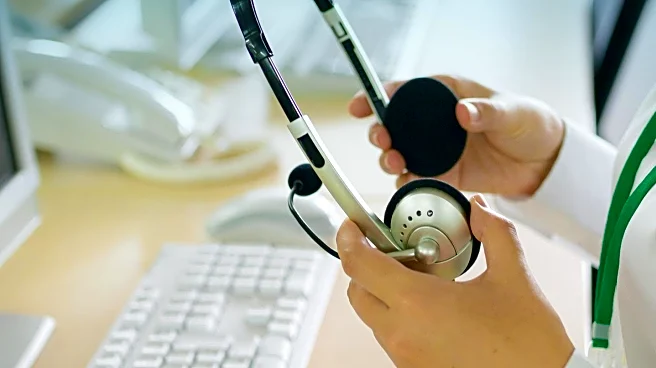What's Happening?
Healthcare contact centers, traditionally viewed as back-office functions, are increasingly recognized as pivotal to patient care experiences. These centers are now considered the 'front door' of healthcare,
where long hold times and fragmented systems can negatively impact patient outcomes and trust. The average hold time in U.S. healthcare call centers exceeds four minutes, significantly longer than the industry benchmark of 50 seconds, leading to patient dissatisfaction and potential provider switching. Effective communication is crucial, as seamless interactions build patient confidence, while disjointed ones erode it. Modern communication platforms are enabling healthcare providers to improve efficiency and quality simultaneously, with real-time data access and integrated workflows reducing friction and burnout.
Why It's Important?
The transformation of healthcare contact centers into strategic assets has significant implications for patient care and provider operations. By improving communication flow, healthcare providers can enhance patient satisfaction and reduce clinical risks associated with missed appointments. Predictive reminders and targeted outreach have been shown to decrease no-show rates, thereby improving continuity of care and protecting revenue. Additionally, integrating telehealth into contact center workflows ensures care continuity even in resource-constrained environments. This shift not only boosts operational efficiency but also strengthens trust between patients and providers, which is essential for the future resilience and adaptability of healthcare systems.
What's Next?
Healthcare leaders are encouraged to treat contact centers as strategic assets rather than cost centers. Investing in these centers as care channels can lead to operational efficiency and a foundation of trust that enhances the patient journey. Organizations that pair real-time analytics with a culture of accountability and feedback are likely to see improvements in key performance indicators, staff engagement, and patient satisfaction. As healthcare systems continue to evolve, the role of contact centers will be central to fostering deeper trust and adaptability in patient-provider relationships.
Beyond the Headlines
The cultural shift in viewing contact centers as integral to patient care highlights the importance of leadership buy-in and training. Organizations that embrace this change can achieve not only operational wins but also clinical improvements. The integration of telehealth and real-time analytics into contact center operations represents a broader trend towards digital transformation in healthcare, emphasizing the need for resilience and adaptability in the face of increasing patient demands and resource constraints.











